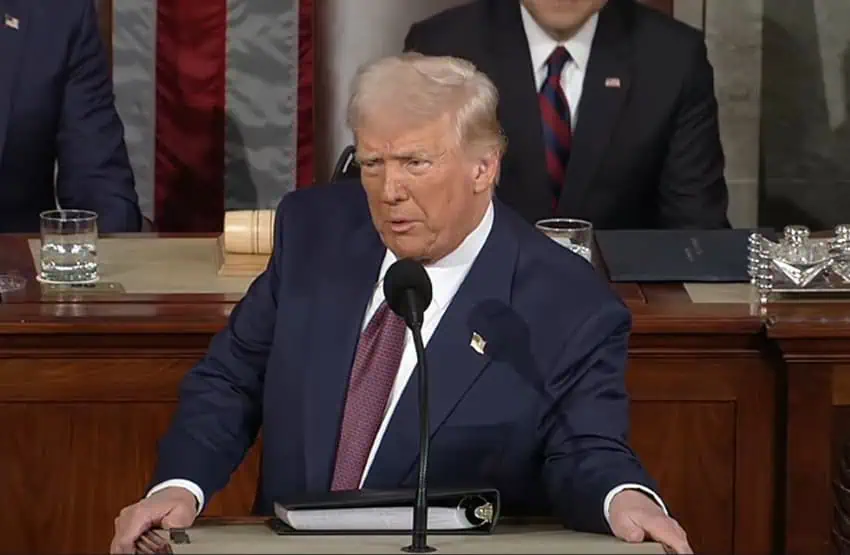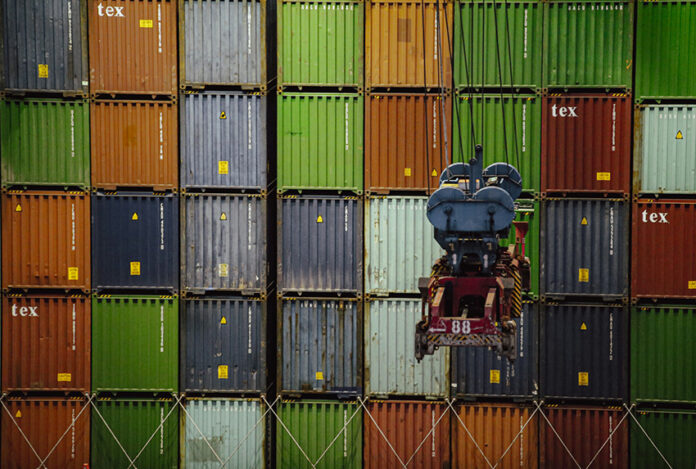In keeping with a key objective of its Plan México economic initiative, the Mexican government intends to increase tariffs on Chinese imports, the Bloomberg news agency reported on Wednesday.
Bloomberg said that the Mexican government “plans to increase tariffs on China as part of its 2026 budget proposal next month, protecting the nation’s businesses from cheap imports and satisfying a longstanding demand of U.S. President Donald Trump.”

Citing “three people briefed on the matter,” the news agency reported that the higher tariffs are expected for imports including cars, textiles and plastics, and “aim to shelter domestic manufacturers from subsidized Chinese competition.”
One of the central goals of Plan México, an ambitious industrial policy unveiled in January, is to reduce reliance on imports from China and other Asian countries.
Mexico’s expenditure on imports from China has increased in recent years, and the country’s trade deficit with the East Asian economic powerhouse hit a new record high in the first six months of 2025.
One of Bloomberg’s sources, all of whom asked to remain anonymous, said that imports from other Asian countries are also expected to face higher tariffs.
Citing its sources, Bloomberg said that “specific tariff rates weren’t immediately clear, and the plan could change.”
Jorge Guajardo, a former Mexican ambassador to China and an advocate for higher tariffs on Chinese goods, wrote on LinkedIn that “hopefully” the tariffs referred to in the Bloomberg report “are high enough that they protect industry more than they raise revenue.”
Bloomberg reported that “increased tariffs on China would boost Mexican revenue and help [President Claudia] Sheinbaum’s push to find ways to rein in Mexico’s budget deficit, which reached the widest since the 1980s in 2024 as her predecessor spent heavily to complete flagship projects before leaving office.”
Mexico’s current tariffs on imports from China
A range of Chinese goods are already subject to tariffs when entering Mexico. They include:
- A duty of up to 20% for Chinese vehicles, including EVs. (The U.S. and Canada have a 100% tariff on Chinese EVs)
- A 25% tariff on footwear from China.
- A 35% tariff on many Chinese textile products, including clothing.
Hundreds of other Chinese products across a range of categories including steel, aluminum, wood, plastics, chemicals, paper and cardboard, ceramics, glass, electrical material, musical instruments and furniture are subject to tariffs in the range of 5%-50%.
Many of Mexico’s tariffs on imports from China also apply to goods from other countries with which it doesn’t have a free trade agreement.
Higher tariffs on China could help Mexico in USMCA review
Mexico’s growing trade relationship with China, and Chinese investment in Mexico, are seen as a potential stumbling block for the Mexican government in the 2026 review of the United States-Mexico-Canada Agreement (USMCA), the North American free trade pact that superseded NAFTA in 2020.
Imposing higher tariffs on imports from China will likely go some way to appeasing the governments of the U.S. and Canada, both of which have critically questioned Mexico’s economic ties with the world’s second largest economy.

U.S. President Donald Trump has even accused Mexico of being a transshipment hub for Chinese goods, which the Mexican government denies.
Since early this year, the Trump administration has been urging Mexico to increase tariffs on imports from China, and high-ranking officials, including President Sheinbaum, have appeared amenable to the idea.
In February, Sheinbaum said that imposing additional tariffs on imports from countries with which Mexico doesn’t have free trade agreements, such as China, was an option.
Throughout her presidency she has made it clear that maintaining the USMCA — and protecting Mexican industry from cheap imports — is a priority for her government.
Raising tariffs on imports from China would be a clear and concrete manifestation of that stated commitment, and could help Mexico achieve improved trading conditions with the United States, which this year has imposed duties on a range of Mexican products including steel, aluminum and cars.
The Chinese cars conundrum
Higher tariffs on Chinese cars would make those vehicles less competitive in the Mexican market, where cars made by automakers such as BYD and Chirey have become very popular.
Such is the demand for Chinese cars in Mexico that the country, Bloomberg reported, has become “the top global destination for Chinese vehicles, overtaking Russia, according to the China Passenger Car Association.”
In the words of auto sector consultant and analyst Michael Dunne, Mexico has found itself “quite suddenly, awash in Chinese cars.”
Imposing higher tariffs on those vehicles would make them more expensive and thus less appealing to Mexican consumers, but at the same time limit Mexicans’ capacity to purchase an affordable electric vehicle such as those made by BYD, now the world’s largest EV manufacturer.
Analysis: Chinese cars pour in to Mexico, rattling the USMCA
To have an each-way bet, so to speak — i.e. to give Mexican consumers at least some access to affordable Chinese cars while appeasing the U.S. — Dunne told Mexico News Daily earlier this year that the Mexican government could offer a quota to limit the percentage of Chinese cars that are allowed to come into Mexico tariff-free or at a low tariff rate.
Anything above that quota could be subject to higher levels of tariffs.
It remains to be seen whether that is the route Sheinbaum will choose to take, but the option is there as the president seeks to balance the interests of the people she represents with the pressure — or demands — her government faces from the Trump administration, which is also pushing Mexico to do more to combat cartels and the northward flow of fentanyl and other illicit drugs.
With reports from Bloomberg
